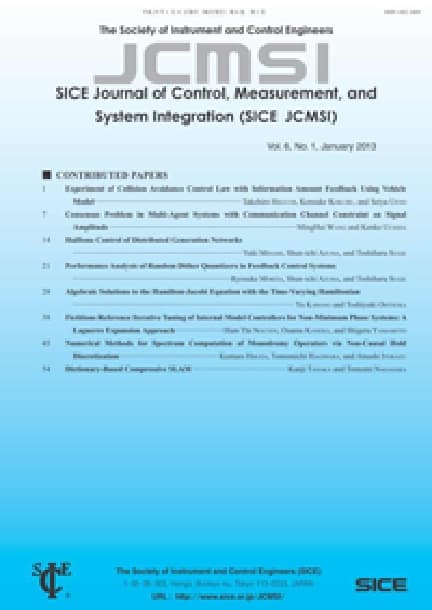Analysis and Synthesis of Discrete-Time Interconnected Positive Systems
Hiroyuki ICHIHARA, Shoya TANABE, Yoshio EBIHARA, Dimitri PEAUCELLE
pp. 91-99
DOI:
10.9746/jcmsi.11.91Abstract
This paper presents analysis and synthesis of interconnected systems where the interconnected system of interest consists of discrete-time positive subsystems and an interconnection matrix. The paper gives sufficient conditions for the discrete-time single-input single-output (SISO) subsystems and the interconnection matrix so that the interconnected system has the property of persistence. The fundamental differences for the persistence between the conditions of the discrete-time setting and those of a continuous-time setting are also discussed. The obtained analysis result can apply to formation control for multi-agent systems, which is a synthesis part of the paper. Numerical examples including formation control of mobile robots are shown to illustrate the proposed formation control design method.
Readers Who Read This Article Also Read
SICE Journal of Control, Measurement, and System Integration Vol.11(2018), No.2
SICE Journal of Control, Measurement, and System Integration Vol.11(2018), No.2
SICE Journal of Control, Measurement, and System Integration Vol.11(2018), No.2









